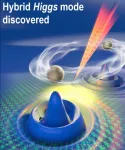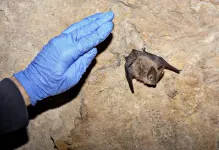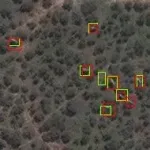Brain cell network supplies neurons with energy
Researchers identify important function of the so-called oligodendrocytes
2021-01-19
(Press-News.org) The human brain has about as many neurons as glial cells. These are divided into four major groups: the microglia, the astrocytes, the NG2 glial cells, and the oligodendrocytes. Oligodendrocytes function primarily as a type of cellular insulating tape: They form long tendrils, which consist largely of fat-like substances and do not conduct electricity. These wrap around the axons, which are the extensions through which the nerve cells send their electrical impulses. This prevents short circuits and accelerates signal forwarding.
Astrocytes, on the other hand, supply the nerve cells with energy: Through their appendages they come into contact with blood vessels and absorb glucose from these. They then transport it to the interfaces between two neurons, the synapses. Before that, they partially convert the sugar into other energy-rich molecules. "We have now been able to show that oligodendrocytes play an important role in the distribution of these compounds," explains Prof. Christian Steinhäuser from the Institute of Cellular Neurosciences at the University of Bonn (Germany). "This is apparently especially true in a particular brain region, the thalamus."
Huge supply network
The thalamus is also called the "gateway to consciousness". The sensory signals it receives include those from the ears, eyes, and skin. It then forwards them to the respective responsible centers of the cerebral cortex. Only then do we become aware of this information, for instance the sound of an instrument.
It has long been known that astrocytes can form close connections: They build intercellular networks through tunnel-like coupling. Molecules can migrate from one cell to another through these "gap junctions". A few years ago, Steinhäuser and his colleagues were able to show that there are also oligodendrocytes in these networks in the thalamus, about as many as astrocytes. The cells form a huge network in this way, which neuroscientists also call a "panglial network" ("pan" comes from Greek and means "comprehensive"). In other regions, however, the networks consist predominantly of coupled astrocytes. "We wanted to know why this is different here," explains Dr. Camille Philippot of Steinhäuser's research group, who conducted much of the work. "Our results demonstrate that the high-energy compounds travel through this network from the blood vessels to the synapses," Philippot emphasizes. "And oligodendrocytes seem to be indispensable in this process."
The researchers were for instance able to demonstrate this in mice, in which the oligodendrocytes are unable to participate in the network because they lack the appropriate tunnels. In these mice, energy molecules no longer reached the synapses in sufficient quantities. The same was true if the astrocytes lacked the appropriate connecting links. "The thalamus apparently requires both cell types for transport," Steinhäuser concludes.
Starved neurons cannot communicate
The researchers were also able to show the consequences of such a disrupted energy supply for neuronal information processing. The synapses are where two neurons meet - a sender cell and a receiver cell. When a pulse from the sender cell arrives at the synapse, it releases messenger molecules into the synaptic cleft. These neurotransmitters dock onto the recipient cell and trigger electrical signals there, the postsynaptic potentials. When these signals are generated, potassium and sodium ions pass through the membrane of the recipient cell - sodium ions inward, potassium ions outward. These, like the neurotransmitters, must then be pumped back again. "And for that, the neurons need energy," explains Steinhäuser, who is also a member of the Transdisciplinary Research Area "Life and Health" at the University of Bonn. "When energy is lacking, pumping activity ceases." In the experiments, "starved" neurons were therefore no longer able to generate postsynaptic activity after just a few minutes.
INFORMATION:
The findings of the basic research allow a better understanding of the processes involved in signal processing in the brain. They may also shed new light on diseases in which oligodendrocytes do not function properly.
Publication: Camille Philippot, Stephanie Griemsmann, Ronald Jabs, Gerald Seifert, Helmut Kettenmann and Christian Steinhäuser: Astrocytes and oligodendrocytes in the thalamus jointly maintain synaptic activity by supplying metabolites. Cell Reports, https://doi.org/10.1016/j.celrep.2020.108642
[Attachments] See images for this press release:

ELSE PRESS RELEASES FROM THIS DATE:
2021-01-19
AMES, Iowa - Even if you weren't a physics major, you've probably heard something about the Higgs boson.
There was the title of a 1993 book by Nobel laureate Leon Lederman that dubbed the Higgs "The God Particle." There was the search for the Higgs particle that launched after 2009's first collisions inside the Large Hadron Collider in Europe. There was the 2013 announcement that Peter Higgs and Francois Englert won the Nobel Prize in Physics for independently theorizing in 1964 that a fundamental particle - the Higgs - is the source of mass in subatomic ...
2021-01-19
BROOKLYN, New York, Tuesday, January 19, 2021 - The World Health Organization END ...
2021-01-19
WASHINGTON, January 19, 2021 -- A Velcro-like fastener with a microscopic design that looks like tiny mushrooms could mean advances for everyday consumers and scientific fields like robotics.
In Biointerphases, published by AIP Publishing, researchers from Wageningen University in the Netherlands show how the design can use softer materials and still be strong enough to work.
Probabilistic fasteners work, because they are designed with a tiny pattern on one surface that interlocks with features on the other surface. Currently available fasteners, like Velcro and 3M, are called hook and loop fasteners. That design requires harder, stiff material, which ...
2021-01-19
Even prior to the pandemic, burnout among health care professionals was a pervasive public health concern, with END ...
2021-01-19
Large-scale land acquisitions by foreign investors, intended to improve global food security, had little to no benefit, increasing crop production in some areas while simultaneously threatening local food security in others, according to researchers who studied their effects.
The END ...
2021-01-19
CORVALLIS, Ore. - Tiny amounts of gender bias in employee hiring decisions contribute to concerning rates of discrimination and productivity losses that together represent significant costs, financial and otherwise, for employers, a new study from Oregon State University has found.
Gender bias is a subtle, unintentional preference for one gender over the other. Despite significant efforts to reduce bias in hiring over the last several decades, it continues to persist and pose potential problems for companies, said Jay Hardy, an assistant professor of management in OSU's College ...
2021-01-19
BOZEMAN, Montana (January 19, 2021) - A four-year study recently published in Ecology and Evolution concludes that the fungal disease, white-nose syndrome, poses a severe threat to many western North American bats.
Since it was first detected in 2006, white-nose syndrome has killed millions of bats in eastern and central North America. The spread of the fungal pathogen that causes white-nose syndrome in hibernating bats has reached several western U.S. states, mostly likely through bat-to-bat spread, and is presently threatening western species.
Bats with white-nose syndrome have fungus growing on their nose and wings, as the name implies, but the fungal infection also triggers a higher frequency of arousals from hibernation. ...
2021-01-19
Anyone who has tried and failed to meditate knows that our minds are rarely still. But where do they roam? New research led by UC Berkeley has come up with a way to track the flow of our internal thought processes and signal whether our minds are focused, fixated or wandering.
Using an electroencephalogram (EEG) to measure brain activity while people performed mundane attention tasks, researchers identified brain signals that reveal when the mind is not focused on the task at hand or aimlessly wandering, especially after concentrating on an assignment.
Specifically, increased alpha brain waves were detected in the prefrontal cortex of ...
2021-01-19
For the first time, scientists have successfully used satellite cameras coupled with deep learning to count animals in complex geographical landscapes, taking conservationists an important step forward in monitoring populations of endangered species.
For this research, the satellite Worldview 3 used high-resolution imagery to capture African elephants moving through forests and grasslands. The automated system detected animals with the same accuracy as humans are able to achieve.
The algorithm that enabled the detection process was created by Dr Olga Isupova, a computer scientist at the University of Bath in the UK. The project was a collaboration with the UK's University of Oxford and the University of Twente in the Netherlands.
Dr ...
2021-01-19
People's fear of 5G technology is rational. Such technology does emit radiation, even if it's at low levels. But 5G isn't all that different from 4G, and it certainly doesn't cause COVID-19 despite such rumors having spread rapidly across the globe.
Researchers need to better understand how misinformation like this spreads in order to hone their intervention efforts and prevent misinformed perspectives from taking root. In society's virtual world, preventing technological misinformation, in particular, is important now more than ever.
A research team led by Elaine Nsoesie, a Hariri Institute Faculty Fellow, investigated how COVID-19 misinformation proliferated using ...
LAST 30 PRESS RELEASES:
[Press-News.org] Brain cell network supplies neurons with energy
Researchers identify important function of the so-called oligodendrocytes






